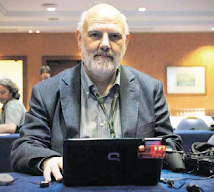Today's inflation report will likely allow the central bank to keep its benchmark lending rate unchanged at its monthly meeting later this week.

Central bank policy makers voted unanimously on April 10 to keep rates at a six-year high of 6.25 percent for a third month, and changed the bias on their policy statement to neutral, removing a sentence from its previous statement that said it could not rule out raising rates again.
The central bank aims to keep inflation in a 2 percent-to-4 percent target band. The bank changed its bias to neutral partly because leaving it unchanged for three consecutive months would weaken its message, according to the minutes released last week.
In the year up to April, the price of rice rose 8.9 percent, bread increased 8.5 percent while beans and lentils rose 6.2 percent, the institute said.
One other factor which may well be in the minds of central bank decision makers is the fact that Chile's economy expanded in March at the slowest pace in almost six years - growing by just 0.7 percent - down from 5.6 percent in February according to the Bank of Chile IMACEC index.

The worst drought in 50 years has cut hydropower reserves as natural gas shortages curtail output by generators, slowing economic activity and industrial output, the National Statistics Institute said on April 30. Electricity generation fell 2.2 percent in March, which had two fewer working days than March 2007.
Chile's economy last expanded at a slower pace than that registered in March back in June 2002, when it slowed to 0.51 percent from 0.68 percent May 2002.
In the first quarter of 2008, the Chilean economy expanded 3.1 percent year-on-year compared to a year-on-year expansion of 6.2 percent in the first quarter of 2007, the central bank said.












No comments:
Post a Comment